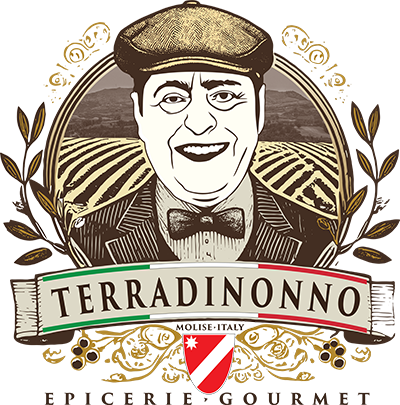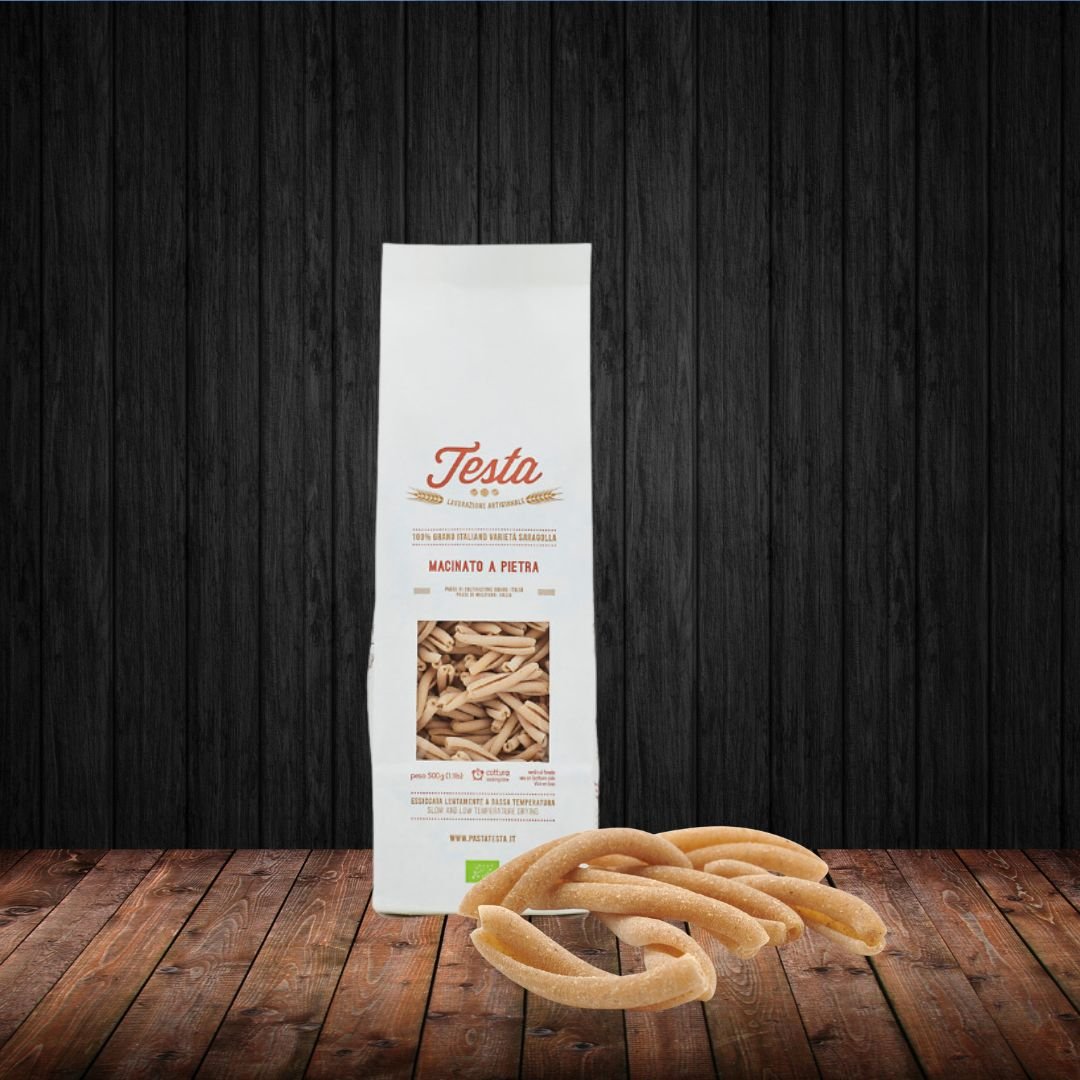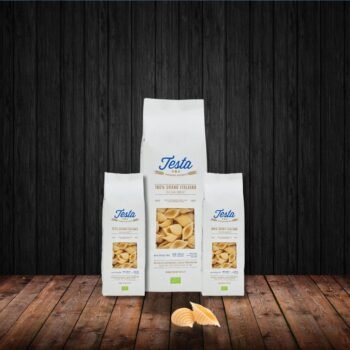We make organic Saragolla Caserecce with stone-ground Saragolla durum wheat semolina , bronze-drawn and finally dried in static cells at low temperatures. We produce our organic pasta using only flours obtained from organically grown wheat. In collaboration with farmers and millers in the Molise region, we are carrying out a supply chain project. In this way, we are committed to ensuring the highest quality and sustainability of our products. Organic Saragolla wheat Saragtolla is a variety of tall-straw durum wheat that arrived in Italy from the Middle East via the Balkans, where the word Saragolla translates to “yellow seed” at the end of the 15th century, and then spread to the south of the country. It is a very rustic variety of durum wheat that can also be grown in hilly and mountainous areas. Due to the very tall structure of its straws, it is suitable for organic production because it manages to tower over weeds and does not require chemical treatments. Low-temperature stone milling Stone milling has a number of advantages. First of all, by keeping the temperature low during milling, the flour is not overheated. This way, the physical and chemical characteristics of the grain are better preserved. The result is a more vital flour, which preserves all the nutrients such as vitamins, oils, enzymes and mineral salts. The stone process also allows the wheat germ and essential oils to blend with the starchy part. Bronze drawing The “matrix” of this type of drawing is made of bronze, which, by exerting more friction, tends to overheat and to avoid this, the extrusion speed must be reduced, helping to leave the surface of the pasta more porous, improving the ability to retain the sauce even after cooking. Bronze-drawn pasta has a porous surface and an opaque appearance. Low-temperature drying Drying and stabilizing the pasta is certainly an important step for the final quality of the product. As with all our pastas, even for the organic Caserecce the process takes place at low temperatures with reasonably long times that go beyond 24 hours. In this way we preserve the chemical and physical characteristics of the pasta as well as excellent digestibility. Our low-temperature drying method allows us to keep the vitamins, enzymes, proteins, gluten and all the other substances present in the semolina unaltered. In particular, with high temperatures that are generally used to speed up the drying process, two essential amino acids such as lysine and methionine are also lost.
Directions for use
How much water to cook pasta?
Pour 1 litre of water for every 100 grams of pasta into a saucepan and bring to the boil.
How much salt to add to water?
For every litre of water and therefore 100 grams of pasta, add 10g of salt.
When to add salt?
Salt should be added when the water starts to boil.
How long does it take to cook pasta?
Once the water has come to the boil, pour in the pasta and wait for the cooking time indicated on the package.
How to season pasta?
When the pasta is cooked, drain the water and add the dressing you previously prepared. Once the dressing is added, toss everything in the pan and stir for a few minutes.






